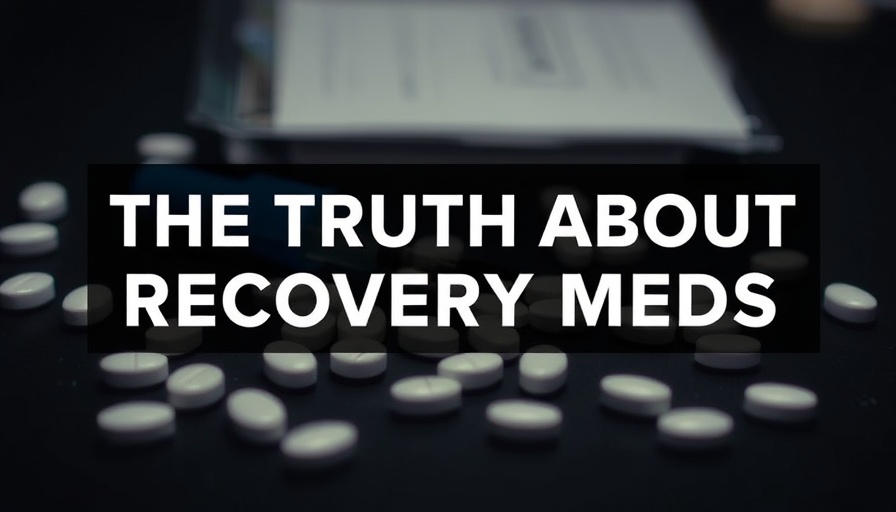
Understanding Opioid Use Disorder: A Growing Concern
Opioid use disorder (OUD) is more than a simple addiction; it’s a chronic and complex condition that significantly impacts individuals, families, and communities. Growing numbers of people are affected by this condition, and it is essential to address it through effective treatments and support. Recent conversations surrounding medications for opioid use disorder have underscored their vital role in recovery. Medications can drastically improve outcomes for those struggling with addiction by addressing cravings and withdrawal symptoms, facilitating a path to recovery.
In 'Medications That Support Recovery from Drug Addiction,' the conversation dives into the impact of medications on opioid use disorder, prompting further analysis of their effectiveness and societal implications.
The Role of Medications in Recovery
Medications play a critical role in supporting individuals with opioid use disorder. For many, medications are used as part of a comprehensive treatment plan that includes counseling and behavioral therapies. With a diverse range of medications available, understanding how they function is key to demystifying their importance. Drugs such as naloxone, buprenorphine, and methadone each have unique properties that contribute to managing and reducing the symptoms of opioid use disorder.
Naloxone: A Lifesaver in Emergencies
Naloxone is often referred to as a life-saving medication because of its ability to reverse an opioid overdose. It works quickly to displace opioids from receptors in the brain and is available in both injectable and nasal spray forms. Many communities have made naloxone more accessible by allowing people to carry it without a prescription. This accessibility means that anyone, regardless of their background, can have a vital tool for saving lives during an emergency.
Buprenorphine and Methadone: Reducing Cravings Without the High
Buprenorphine, another promising medication, only partially activates opioid receptors, which helps to decrease cravings without the euphoric high associated with full opioids. It's typically administered as a monthly injection or a daily sublingual tablet. Methadone, on the other hand, has been a standard treatment for over 40 years, providing stable, long-term relief from withdrawal symptoms while also reducing cravings. Understanding these medications can alleviate fears and misconceptions surrounding opioid treatment.
Community Involvement: The Importance of Training
One of the standout discussions from the video was the call for broader community training on administering naloxone and recognizing signs of overdose. Just like CPR education, teaching laypeople how to use naloxone could save lives. Many individuals have family members affected by substance use; empowering them to act swiftly can change outcomes drastically. Advocates propose that training on these medications should start in schools, creating an informed youth capable of addressing these issues in their households.
The Shift in Perception: Moving Away from Stigma
As we explore these medications, it becomes clear that a shift in societal attitudes is paramount. The stigma surrounding addiction and the use of medications in treatment can contribute to individuals not seeking the help they need. Education and awareness promote understanding, emphasizing that those struggling with addiction deserve compassion and support, not judgment. This change is essential for inspiring more individuals to take advantage of available treatments.
The Role of Comprehensive Care
For a truly holistic approach to recovery from opioid use disorder, medications should integrate seamlessly with comprehensive care strategies. The collaboration between healthcare providers, addiction specialists, and community resources offers a more enriched recovery experience. By doing so, patients can benefit not only from medical interventions but also from psychological support, lifestyle guidance, and a strong network of care that addresses all aspects of their well-being.
Path Forward: A Community’s Responsibility
Addressing opioid use disorder is not a challenge that can be met alone; it requires a community-wide effort. Healthcare professionals, family members, friends, and individuals can work together to create an environment where recovery is supported. Maintaining conversations about medication-assisted treatment and equipping people with knowledge empowers a more informed and proactive society.
If you or a loved one is grappling with opioid use disorder, don't hesitate to reach out for help. Discover the support available to you by connecting with healthcare providers and local resources. Recovery is possible, and with the right tools, we can create healthier communities.
 Add Row
Add Row  Add
Add 






Write A Comment